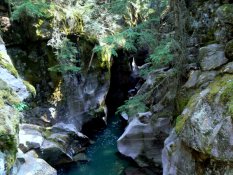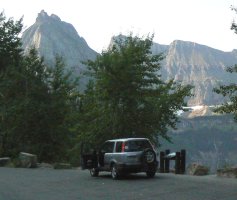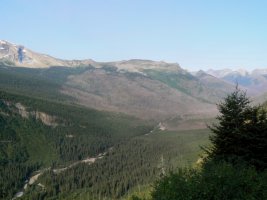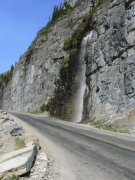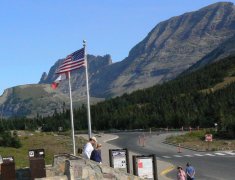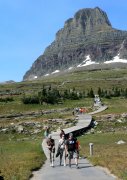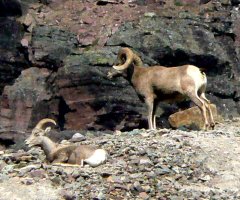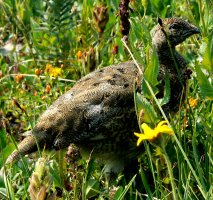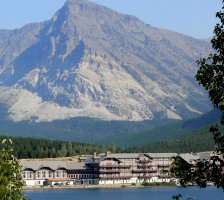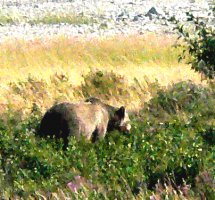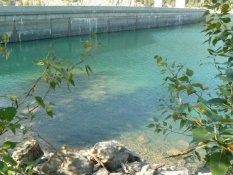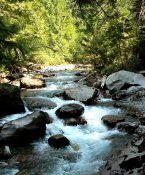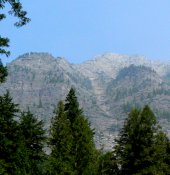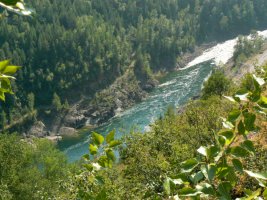Without a doubt, the best known and most spectacular feature of the park is the "Going to the Sun Highway." As wonderful as that stretch of road is, there is much more in this part to see and one should plan to spend at least a couple of days if you visit. Since we entered the park from the west side and stayed in the town of Hungry Horse, I'll start this page there as well. We entered the park from West Glacier, via the Apgar Visitor center.
We began our visit with a short hike of about two miles to see the cedar and hemlock forest and the water features of Sprague Creek. The trail is well maintained with boardwalks or stairs in most difficult places. The part that goes up to the falls is quite steep and a bit of a challenge but Pam made in despite her asthma and we saw many young children on that section so I strongly encourage you to take the time to see it.
All of the park is a series of mountain scenes that are enough to take one's breath away. The mountains here are some of the most difficult in the US and a great deal of this park requires serious hiking to see it. There are also several overnight hikes and at least two of those have lodge accommodations. We have given up the serious backpacking way of travel so we contented ourselves with the shorter hikes of one of two miles distance, each way. Even short walks will greatly expand the Glacier Park experience.
The "Going to the Sun" part is the west slope from Logan Pass and it is as exciting as the stories say. In addition, there is construction in progress to rebuild sections of the road which are beginning to slide down the cliffs so a long stretch is one lane with use of a pilot car and there are places that the larger vehicles are still a pretty tight fit. Travel is restricted to vehicles of 24' long and no more than 96" wide. There are signs that read "No Bicycles" but we saw several that were riding over. There is also a free tram system that will take visitors through the park. At Logan Pass there are numerous walking and hiking trails of different degrees of length and difficulty. I strongly encourage any reader to take the time to do at least some walking around as this can be the very best part of the park. Since you are above timberline, it is mostly a tundra environment.
By walking the trails one can get surprisingly close to much of the wildlife. In fact, for animals that are not fed by the visitors, we found it amazing how little attention some of them pay to people, as long as no-one tries to touch them.
We have visited many parks and this is the first where we have been close to mountain goats and bighorn sheep. What a wonderful experience!
One can easily spend another day in taking a side trip north to Waterton Lakes Canadian National Park, which shares a common boundary with Glacier Park. While not as large as Glacier, it is also very scenic and quite different than US parks. On the rout back to Glacier we visited the "Manny Glaciers" area where I was fortunate to get a photograph of a grizzly bear and her cub. They were quite distant but seemed unaware of the people watching and taking pictures.
If you pass through the area of Glacier National Park and do not stop for at least a couple of days you will be making a big mistake!






